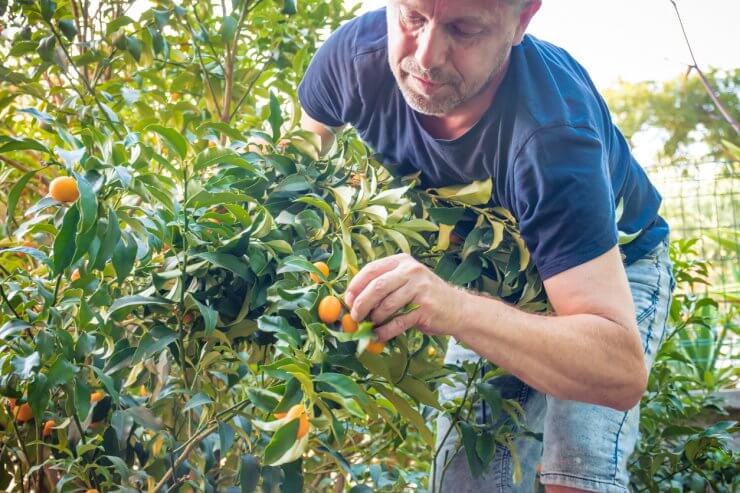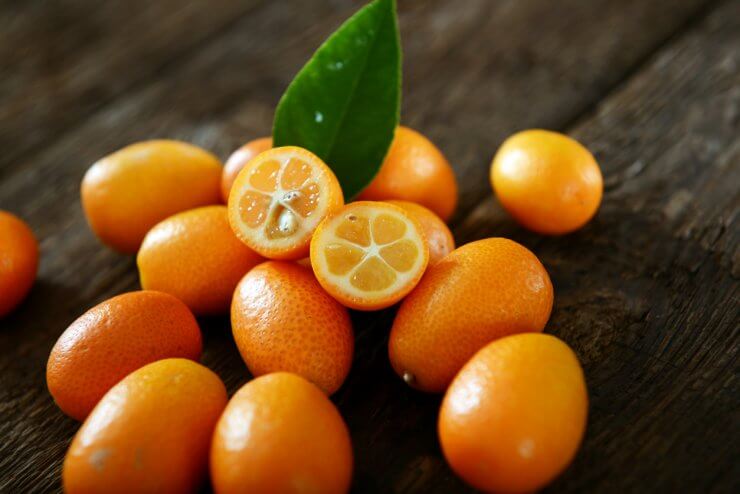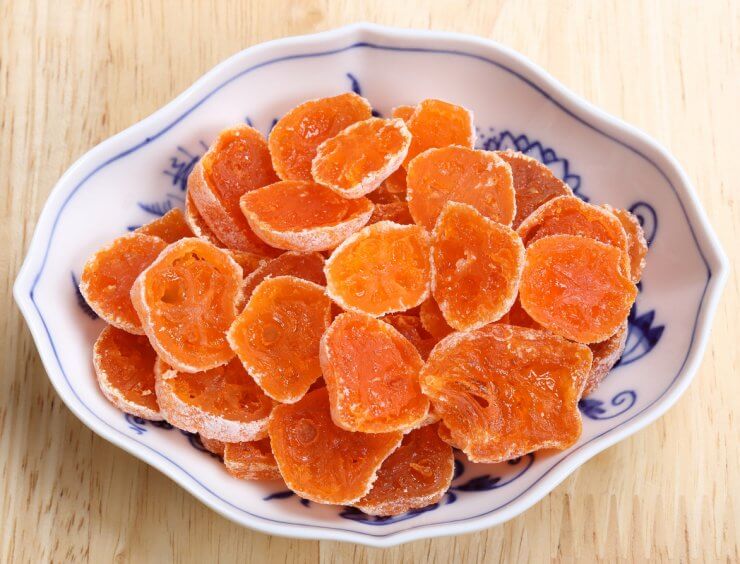
Harvesting kumquats
Harvest Your Kumquats
Kumquats tend to ripen in late winter or early spring. The skin will be a deep orange and the fruit will be slightly soft to the touch. Use a knife or pruning scissors to cut the fruit from the tree so you don’t damage fruit or tree. Around the time of the Chinese Lunar New Year, it’s customary to give kumquats as a gift. You can use a kumquat cluster with a few leaves attached to a branch as a table decoration. Note that not all kumquat trees will appreciate the stress of having a section of branch cut off for decoration. Trees growing in Florida will tolerate this treatment more than trees growing in the cooler climate of California.
Once your kumquat trees start to produce fruit, in most cases you can leave the kumquats on the tree until you’re ready to eat them. But be prepared to have a lot of kumquats! You might want to plan to harvest them every day, unless you want to enjoy the beautiful contrast between the leaves and fruit. Some mature trees can produce a thousand kumquats or more per season—so get picking!
Store Your Kumquats

Delicious kumquats ready to eat
Kumquats are best eaten fresh off the tree. But, as we noted, kumquat trees are rather prolific—and you can only eat so many kumquats at once. So, where to put them until you try out a new recipe? You can keep fresh kumquats on the counter for a few days. After that, you need to keep them from spoiling. You have a few options:
- Bag ‘em: They need to go into the fridge. Put your kumquats in the produce bin in a sealed plastic bag for up to a month. If you put the kumquats in a sealed container, they’ll last up to two weeks.
- Freeze ‘em: Wash your kumquats. Keep them whole, or cut them into slices and take out the seeds. Make a simple syrup of 4 parts water to 2 parts sugar. Heat the mixture and stir until all the sugar is dissolved. Put your kumquats in a freezer bag or a freezer-safe container. Pour the sugar syrup over the fruit, leaving about 1/2 inch of space at the top to allow for expansion as the kumquats and syrup freeze. Put your sweet morsels in the coldest part of freezer—but don’t forget about them! Use frozen kumquats within 10 months.
Preserve Your Kumquats

Dried kumquat slices
If you want to savor the flavor of kumquats beyond their harvest season, there are a few simple ways to keep your kumquats for future snacking, baking, and more.
- Dry ‘em: You don’t need a dehydrator for this; you can use your oven. Slice washed kumquats into very thin slices; remove seeds and pith. Make some simple syrup (described above in the Store section). Dip each kumquat slice into the simple syrup and then lay the slices on a parchment-lined baking sheet. Dry in the oven at 200 degrees F for at least 1 1/2 hours. Turn the slices over halfway through. If you use a dehydrator, follow your instruction manual for preparation methods and timing.
- Soak ‘em: You can keep your kumquats in anything from rose water to vodka. (Always follow good canning jar hygiene.)
- Jam ‘em: Make a jam, chutney, or preserve with part of your crop.
Be sure to check out our Kumquat Recipes for other sweet suggestions for preserving your bumper kumquat crop.
Please tell us how you use your kumquat harvest—and what you do with all the kumquats. Do you make jam, preserves, or pickles? Do you use them in cooking and salads? Do you celebrate Chinese New Year with gifts of fresh kumquats?


 Previous
Previous

